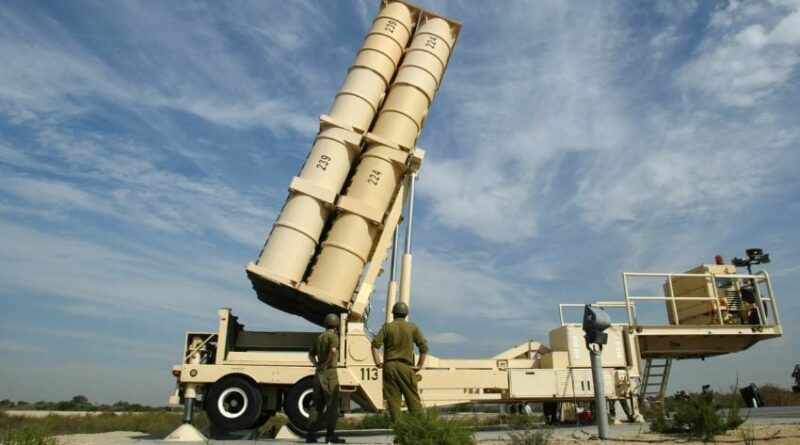Israel faces shortage of Arrow Interceptors: US official says
Washington: Israel is running low on its Arrow defensive interceptors, The Wall
Street Journal reported, a shortfall that could undermine the
country’s ability to shoot down long?range ballistic missiles from
Iran.
Citing an anonymous U.S. official, the Journal said Washington has
been aware of the capacity problem for months and has moved to
bolster Israel’s defences with additional systems on land, at sea and
in the air. The Israeli military declined to comment on “matters
related to munitions.”
Israel’s comprehensive air defence network has proven crucial in
thwarting recent Iranian missile salvos. At its core lies the Iron
Dome system—ten mobile batteries strategically deployed near
population centres.
Each battery’s radar tracks incoming rockets, calculating their
trajectory to determine whether they threaten urban areas. If so, a
launcher unleashes one of its 20 interceptor missiles to neutralize
the threat mid?air.
Beyond short?range rockets, Israel employs David’s Sling to counter
medium?range missiles flying between 40?km and 300?km.
Developed jointly with the United?States, David’s Sling bridges the
gap between Iron Dome and longer?range systems, ensuring
coverage against more powerful projectiles.
For long?range ballistic missiles—some with ranges up to
2,400?km—Israel relies on the Arrow family of interceptors. Arrow
batteries use advanced radars and hit?to?kill technology to destroy
high?altitude threats before they can re?enter the atmosphere.
Together, these layered defences—Iron Dome, David’s Sling and
Arrow—form a shield-in-depth that enhances Israel’s resilience,
though recent attacks have shown that no system is infallible when
swarmed by large barrages.
Israel’s air defence architecture is built around a multi?layered
shield designed to detect, track, and neutralize threats across a wide
spectrum of ranges and trajectories.
At its foundation lies the Iron Dome, a highly mobile, short?range
system covering threats from approximately 4?km up to 70?km.
Each Iron Dome battery comprises a radar, a battle?management
and weapon?control (BMC) unit, and multiple launchers loaded with
Tamir interceptor missiles.
The system’s radar continuously scans for incoming rockets and
artillery shells, while the control centre computes their flight paths
in real time. If a projectile is deemed likely to strike a populated
area, one or two Tamir interceptors are fired to destroy it mid?air,
minimizing collateral damage on the ground.
Sitting above Iron Dome in Israel’s defensive umbrella is David’s
Sling, which bridges the gap between short?range rockets and
high?end ballistic threats. With an engagement envelope of 40?km
to 300?km, David’s Sling is tasked with intercepting short?range
ballistic missiles, large?calibre rockets, and cruise missiles.
Its core weapons are the Stunner interceptor missiles, launched
from a vertical firing unit and guided by advanced radar and
electro?optical seekers. An operations centre coordinates the
system’s response, ensuring that David’s Sling activates only when
the threat exceeds Iron Dome’s reach but falls short of the
long?range ballistic domain.
For threats that lie beyond 300?km—such as medium? and
long?range ballistic missiles—Israel relies on the Arrow family of
interceptors. Arrow 2 provides high?altitude interception of
medium?range rockets, while the newer Arrow 3 is optimized for
exo?atmospheric engagements against long?range missiles,
potentially in their space?flight phase. Each Arrow battery
incorporates its own dedicated radar, launcher, and a sophisticated
command and battle?management centre. By engaging threats at
very high altitudes, Arrow not only protects critical infrastructure
but also reduces the risk of debris falling on populated areas.
Together, these three systems—Iron Dome, David’s Sling, and
Arrow—form a cohesive, “defence?in?depth” strategy. Incoming
threats are automatically handed off from one layer to the next
based on range, trajectory, and severity, creating overlapping zones
of protection. This integration maximizes interception rates and
ensures that, even during heavy bombardment or salvo attacks,
Israel retains a credible and resilient defensive posture. NNI



